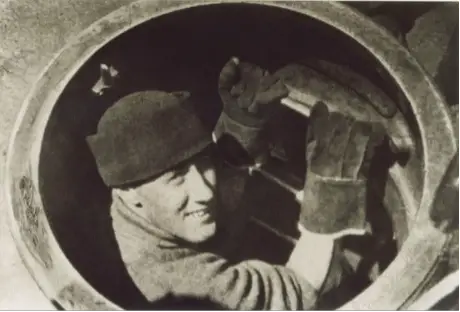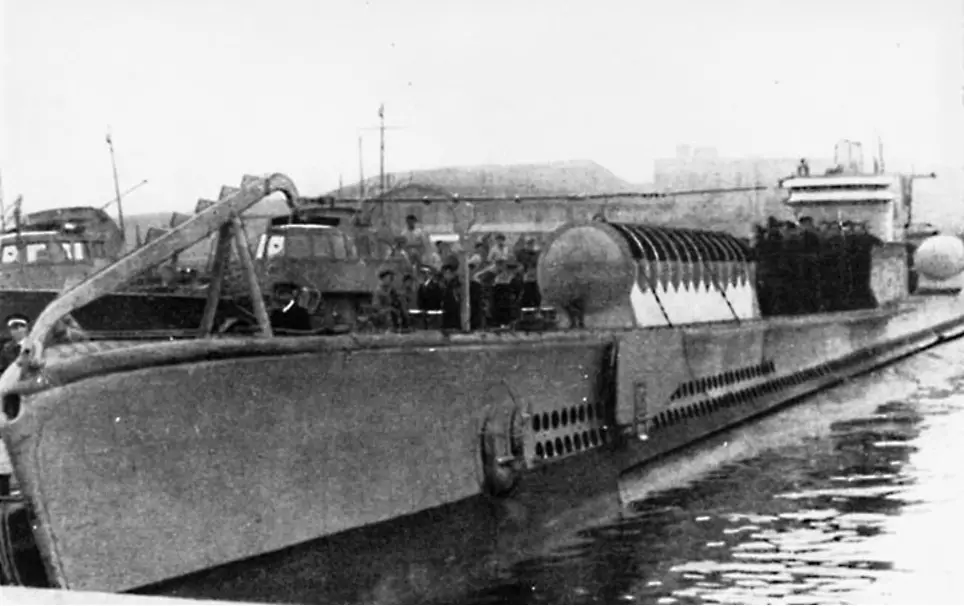Context of the mission
After the Allied landings of Operation Torch, the ports in French North Africa started to see an intense traffic of warships and merchant ships. At this point in the war, the only way the Italian navy could intervene and hit this traffic was to launch attacks with special naval assault crafts and men of the elite 10° M.A.S. flotilla (referred also as the X M.A.S.).
The submarine Ambra, under the command of Mario Arillo, was selected for the mission. The Ambra carried three human torpedoes (SLC 236-237-238) and 10 “Gamma men”, frogmen equipped with small explosive charges.

Figure 1 Commander Mario Arillo
The voyage
The Submarine Ambra set sail from La Spezia in the early afternoon of 4 December 1942, bound for Algiers, arriving in the area of operations on the evening of 7 December. However, the weather and sea conditions were prohibitive for the operation and the boat had to wait until December 10th. On the morning of the 11, following an improvement of the weather conditions, Ambra began the final approach towards Algiers submerged, to avoid minefields and the intense air-naval surveillance activity. Due to a failure in the hydrophone device, the boat had to proceed blindly. In the afternoon, the Ambra hit the seabed at a depth of 90 meters.

Figure 2 The submarine Ambra with the cylinders used to carry the human torpedoes
Commander Arillo then decided to crawl along the seabed at slow speed, hoping to climb up the coastline and begin the attack, for which he needed a depth of a maximum of 20 meters to release the «Gamma» and SLCs. After two and a half hours, the submarine finally stopped at 18 meters of depth. Two men were sent out to the surface to verify the situation, to communicate with the submarine they used a telephone connected via cable. They reported no ships on the horizon, nor they could distinguish the coastline. The two men got back to the submarine and the Ambra.
After resuming its blind approach until 9.45 pm when they finally arrived near the coast, a couple of kilometers from the port entrance, they also observed six merchant ships anchored nearby. It was time to launch the attack.
The attack
The human torpedo operators and the “gamma” men ventured outside the submarine and selected their targets. Once their mission was accomplished, they would have tried to get back to the submerged submarine, looking for Lieutenant Jacobacci, who was waiting for them on the surface, just above the submarine resting on the seabed.
The two men on the SLC 236 began their approach against an allied ship but their human torpedo suffered a breakdown and they aborted the attack. They tried to get back to the Ambra, picking on the way one of the Gamma men who failed to attack given the strong water currents. They could not locate Jacobacci, thus they sunk their SLC and reached the coast, where they were later captured by a French patrol.
The men on SLC 237 managed to plant a warhead under one merchant ship but failed to plant the second one. They also could not locate Jacobacci and then reached the coast, picking up other two Gamma men. They were captured later in the morning by a British patrol.
The SLC 238 also suffered from yet another failure, but the two operators managed to fix it and then planted their warheads under two distinct ships. While getting back towards the Ambra, they were spotted by a searchlight and subject to gunfire. After sinking their SLC, they too reached the coast and got captured.
As for the gamma men, three were unable to attack their targets due to the strong water currents and were picked up by the SLCs. At least other six men managed to plant their charges on two ships. What happened to the last gamma is quite uncertain. What is sure, is that all of them failed to locate Jacobacci and the Ambra and subsequently got captured after reaching the coastline.
Epilogue
Commander Arillo had the order to wait until 01:00 AM before withdrawing. Instead, he waited until 2:54 AM, hoping to recover at least some men of the attacking party. With no signs, Arillo decided to finally withdraw, and the Ambra remerged at 7:45 PM, after having spent 36 hours underwater. The submarine finally reached La Spezia a few days later.
Back in Algiers, a bunch of explosions crippled two ships, the Empire Centaur (7000 tons) and the Harmattan (6000 tons), while the other two were sunk, the Ocean Vanquisher (7000 tons) and the Berto (1500 tons).
The mission was considered a partial success, perhaps more was expected, since a total of 16 operators were deployed. In addition, all these highly trained men were lost. The malfunctions of the SLC were probably caused by the long and tumultuous navigation that the Ambra had to face.
Despite scoring damages and sinkings, this attack had achieved too little to influence the Allied operations in North Africa.
Sources
Bagnasco, E. (2015). I mezzi d’assalto Italiani 1940-1945 (Parte I).
Giorgerini, G. (2007). Attacco dal mare, storia dei mezzi d’assalto della marina italiana.
Mucedola, A. (2020) 11 dicembre 1942, l’azione di Algeri, published on Ocean4future